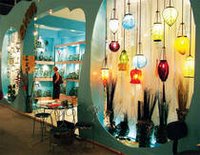
The Philippine food industry stands to benefit from the projected increase in the Arab Peninsula’s food imports by over 50% of its estimated US$9 billion annual food and agricultural products, mainly attributed to the region’s rapid population growth (estimated to be 64 million by 2025), the Center for International Trade Expositions and Missions (CITEM) reported.
“The Middle East is one of the most interesting world markets for food and beverages. This region, including the GCC countries, already amounts to a US$ 12 billion food industry as of 2005,” said Trade Assistant Secretary and CITEM Executive Director Fe Agoncillo-Reyes.
In abid to address the growing Middle East food market, the Department of Trade and Industry through CITEM in cooperation with the Philippine Trade and Investment Center in Dubai and the Philippine embassies in Qatar, Bahrain, and Kuwait, will hold a Roadshow promotion dubbed as ‘IFEX Philippines Goes to the Middle East’ (17-26 November 2006).
The Roadshow primarily aims to capture the nearly food-independent GCC countries, whose economies have relatively high per capita income levels. GCC or the Gulf Cooperation Council member countries include Bahrain, Kuwait, Oman, Qatar, Saudi Arabia, United Arab Emirates, and Yemen.
“Aside from sustaining the image-building efforts of the country as a reliable source of consumer-ready and high value imported food products, we also intend to strengthen our foothold on the million-strong Overseas Filipino Workers (OFWs) based in the Arab world,” added Agoncillo-Reyes.
Agoncillo-Reyes also explained that this trade and business event will focus on the market prospects in the states of Dubai in U.A.E., Qatar in Doha, Manama in Bahrain, and Basra in Kuwait, while taking advantage on the locations’ geographic proximity to Saudi Arabia and other Arab states.
The IFEX Roadshow will include round table discussion with the Dubai Food Authority on the updated market entry requirements for imported food, courtesy calls on Philippine Embassies in areas concerned, pre-arranged business matchings with leading food trade associations and importers, and visits to key food retailers and wholesalers of Philippine food products in identified Arab states.
“We also plan to network with Halal certifying bodies and authorities in the Pan Arab regions. If Philippine-manufactured Halal products become globally compliant, then it will be easy for us to penetrate the Moslem market,” noted Agoncillo-Reyes. Reports say that the global Halal food market is set to reach US$ 500 billion by 2010.
In 2004, the Philippine delegation of the Middle East cum Food Festival clinched US$ 10.7 million in sales while the participants of the Saudi Food held last year generated a total of US$ 5 million sales. Bestsellers in these two fairs were canned tuna and sardines, preserved fruits, powdered coconut, condiments, fruits and vegetables, fruit juices, noodles, ice cream and dairy products, wines, cereals, and desiccated coconut.
To date, the 2005 Philippine exports on food and food preparations reached US$ 1.7 billion, posting a 4.9 per cent increase over 2004 figures. Meanwhile, a total of US$ 47.4 million worth of Philippine food products was imported by the Middle East particularly the U.A.E., Qatar, Bahrain, and Kuwait.
For information on joining the Philippine delegation to the Middle East, please call CITEM, Agri-Marine Division at 831-1282, 831-2201 locals. 204 and 238 or e-mail: agrimarine@citem.com.ph.
 MANAMA: A delegation of Filipino business leaders arrived in Bahrain last night to discuss with their Bahraini counterparts the growing trade relations between their countries.
MANAMA: A delegation of Filipino business leaders arrived in Bahrain last night to discuss with their Bahraini counterparts the growing trade relations between their countries.




















